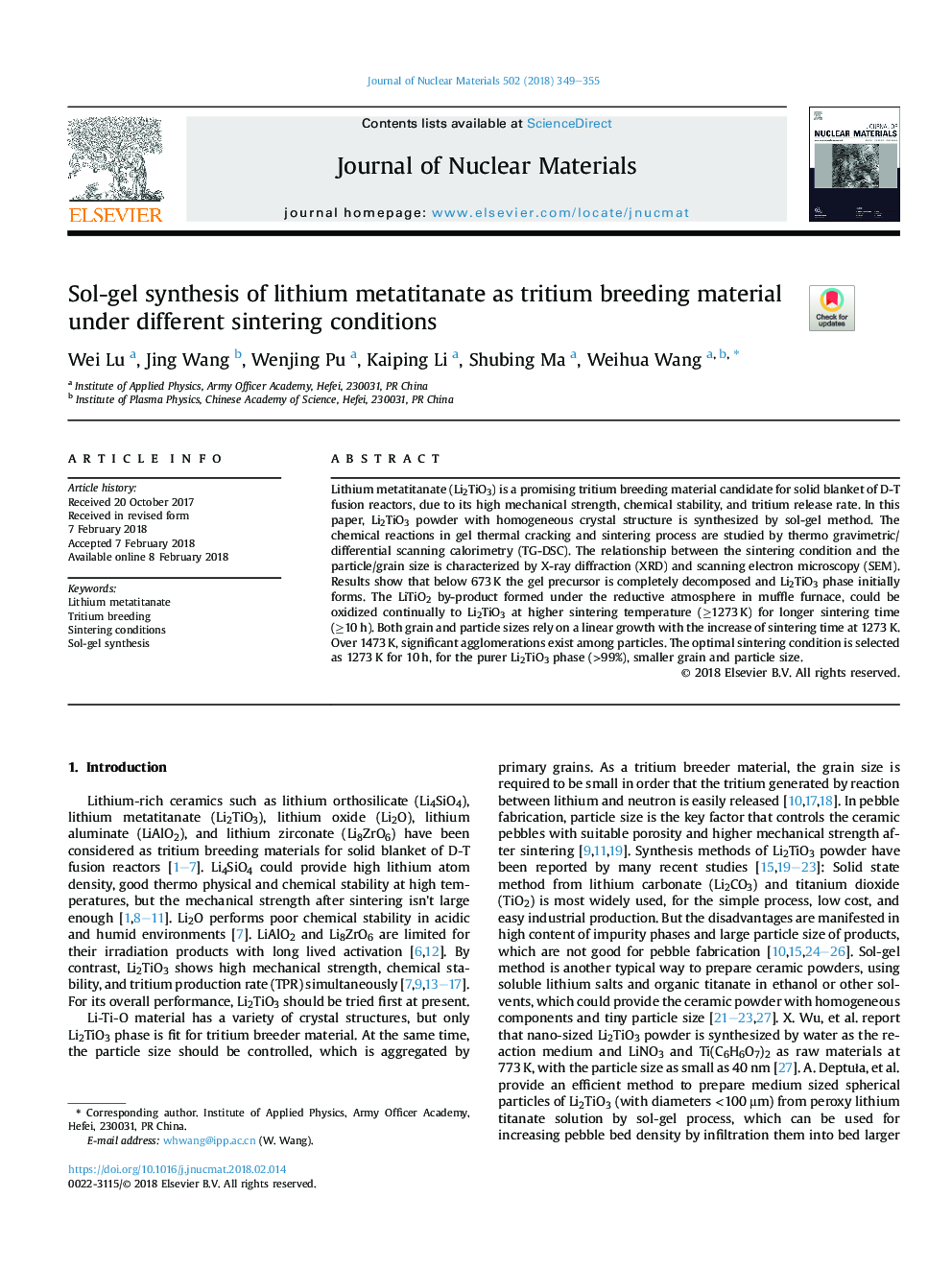| Article ID | Journal | Published Year | Pages | File Type |
|---|---|---|---|---|
| 7963376 | Journal of Nuclear Materials | 2018 | 7 Pages |
Abstract
Lithium metatitanate (Li2TiO3) is a promising tritium breeding material candidate for solid blanket of D-T fusion reactors, due to its high mechanical strength, chemical stability, and tritium release rate. In this paper, Li2TiO3 powder with homogeneous crystal structure is synthesized by sol-gel method. The chemical reactions in gel thermal cracking and sintering process are studied by thermo gravimetric/differential scanning calorimetry (TG-DSC). The relationship between the sintering condition and the particle/grain size is characterized by X-ray diffraction (XRD) and scanning electron microscopy (SEM). Results show that below 673â¯K the gel precursor is completely decomposed and Li2TiO3 phase initially forms. The LiTiO2 by-product formed under the reductive atmosphere in muffle furnace, could be oxidized continually to Li2TiO3 at higher sintering temperature (â¥1273â¯K) for longer sintering time (â¥10â¯h). Both grain and particle sizes rely on a linear growth with the increase of sintering time at 1273â¯K. Over 1473â¯K, significant agglomerations exist among particles. The optimal sintering condition is selected as 1273â¯K for 10â¯h, for the purer Li2TiO3 phase (>99%), smaller grain and particle size.
Related Topics
Physical Sciences and Engineering
Energy
Nuclear Energy and Engineering
Authors
Wei Lu, Jing Wang, Wenjing Pu, Kaiping Li, Shubing Ma, Weihua Wang,
